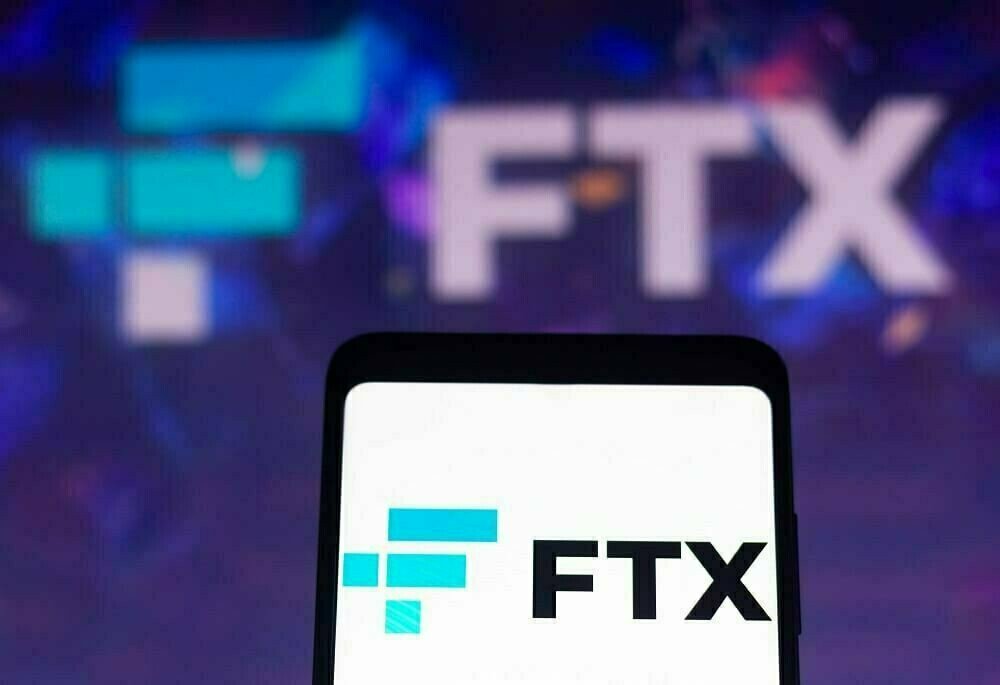ARK Invest, led by Cathie Wood, a prominent institutional asset management firm, has made a significant move in its investment portfolio by liquidating its entire remaining holdings of the Grayscale Bitcoin Trust (GBTC), valued at $200 million.
Bloomberg ETF analyst Eric Balchunas brought this development to light.
From the proceeds of the GBTC sale, ARK Invest allocated approximately $100 million towards an investment in the Bitcoin Futures ETF called Bito.
Nonetheless, industry experts view this move as a temporary measure, with ARK Invest likely seeking a more liquid and diversified investment portfolio.
Consequently, ARK Invest has now become the second-largest holder of Bito, according to Eric Balchunas.
The process of divesting from GBTC began in October, coinciding with Bitcoin’s price reaching $34,000.
At that time, ARK Invest initiated the sale of 100,739 GBTC shares, valued at $2.5 million, from its ARK Next Generation Internet ETF (ARKW). Later, on December 19, the firm sold an additional 809,441 GBTC shares worth $27.9 million.
READ MORE: Bitcoin Price Faces Seasonal Headwinds: BTC Drops to $42,200
In addition to shedding GBTC, ARK Invest also offloaded 148,885 shares of Coinbase, a popular cryptocurrency exchange, amounting to $27.5 million, from its ARK Next Generation Internet ETF.
These actions by ARK Invest are significant, given the ongoing anticipation surrounding the approval of a spot Bitcoin ETF.
Notably, ETF analysts, including Eric Balchunas, have expressed a 99% probability of a spot Bitcoin ETF receiving approval before the deadline of January 10, 2024.
Cathie Wood, the CEO of ARK Invest and a notable advocate for Bitcoin, has been vocal about the likelihood of a spot Bitcoin ETF gaining approval.
During a recent interview, Wood acknowledged that the heightened expectations regarding the approval of spot Bitcoin ETFs could have a short-term impact on Bitcoin’s price.
However, she emphasized the promising long-term outlook for the cryptocurrency market.
Wood’s comments reflect the dynamic nature of the crypto industry and the significant role institutional players like ARK Invest play in shaping its future.
In the lead-up to the anticipated approval of a spot Bitcoin exchange-traded fund (ETF) in early January, the trading volumes of Bitcoin mining company Marathon Digital have surged, propelling it to the top of the charts among U.S. mid and large-cap stocks.
Over the past 24 hours, the publicly traded firm has witnessed an astonishing trading volume of over 105 million shares, surpassing giants like Tesla, Apple, and Amazon, as reported by Yahoo Finance market data.
Additionally, fellow Bitcoin miner Riot Platforms has emerged as the sixth most-traded stock on the charts, with more than 40 million shares exchanged in the last day.
This increase in trading activity on Bitcoin mining stocks coincides with a renewed push by mining companies to expand their operations, with an eye on the expected approval of the spot Bitcoin ETF in January and the Bitcoin halving scheduled for April.
Marathon Digital made headlines on December 19th when it unveiled plans to acquire two mining centers for a staggering $179 million.
This strategic move will augment its current mining capacity by 390 megawatts, supplementing its existing output of 584 megawatts.
Meanwhile, Riot Platforms had made an equally significant investment two weeks prior, acquiring an additional $291 million worth of Bitcoin mining rigs, resulting in its largest-ever increase in hash rate.
READ MORE: FTX Debtors Propose Settlement in Bankruptcy Case over Embed Acquisition
Despite Bitcoin’s impressive growth of more than 163% since the beginning of the year, the shares of Bitcoin mining companies have significantly outperformed the leading cryptocurrency.
Marathon Digital and Riot Platforms have witnessed astounding year-to-date gains of 767% and 452%, respectively, according to data from TradingView.
Notably, the largest publicly traded cryptocurrency exchange, Coinbase, has also experienced substantial gains, soaring by over 450% since the year began.
The year started with crypto-related stocks being popular targets for short trading, likely influenced by the memories of the FTX collapse and other high-profile meltdowns in 2022.
However, those who bet against the crypto sector may have underestimated its resilience, as more than $6 billion worth of crypto-related shorts have been liquidated so far this year.
The surging interest in Bitcoin mining stocks and the broader crypto market indicates a shifting sentiment, with investors increasingly bullish on the future of digital assets and the potential approval of a Bitcoin ETF in the near future.
Longtime market participant Matthew Hyland is confident that Bitcoin is poised for a bullish rally, and he outlined his predictions in a recent post on X (formerly Twitter).
Despite Bitcoin’s dip to $41,650 over the Christmas period, Hyland believes that the cryptocurrency is gearing up for significant price gains.
Hyland points to two key indicators, the Bollinger Bands and the Relative Strength Index (RSI), as signals for a short-term reversal in Bitcoin’s price.
He notes that the Daily Bollinger Bands are tightening, similar to the conditions that triggered previous price surges above $30,000 and $40,000.
Additionally, the Daily RSI is currently at a two-month low, and the 3-Day Moving Average Convergence Divergence (MACD) is on the verge of a crossover.
Bollinger Bands are a widely used volatility indicator that track Bitcoin’s price action and signal potential breakouts in volatility.
The narrowing of the daily-timeframe bands indicates that a new round of volatility may be on the horizon. This pattern has previously been observed in the lead-up to Bitcoin’s recovery above $30,000.
READ MORE: Grayscale’s Strategic Shift and CEO Resignation Spark Speculation Over Bitcoin ETF Approval
The RSI, a momentum oscillator, provides insight into whether BTC/USD is overbought or oversold at a given price.
With an RSI reading of 53, Bitcoin is well below the overbought threshold of 70 and even further from its recent peak of 76 in December. This suggests room for further upside potential.
Longer timeframes also support the bullish outlook, as veteran trader Peter Brandt noted last week.
Hyland adds that the Daily RSI is currently at its lowest levels in over two months, a period when Bitcoin was trading below $27,000.
However, one potential obstacle to Bitcoin’s bullish trend is the Moving Average Convergence Divergence (MACD) on three-day timeframes, which is showing signs of a bearish trend flip.
Hyland acknowledges this, but he highlights that there are several days left for the MACD signal to potentially negate itself based on price action.
He also points out that the MACD has been accurate in predicting both lower and higher prices throughout the year.
In conclusion, Matthew Hyland’s analysis suggests that Bitcoin is on the verge of a significant bullish move, with multiple indicators aligning in favor of a price surge.
While the MACD presents a potential bearish concern, it remains to be seen how Bitcoin’s price action will unfold in the coming days.
The artificial intelligence (AI) industry faces yet another copyright infringement lawsuit, as the New York Times (NYT), a renowned legacy media outlet, has taken legal action against OpenAI, the creator of ChatGPT.
On December 27th, the NYT initiated the lawsuit, asserting that OpenAI unlawfully utilized its content to train its AI chatbots, thereby impeding the NYT’s ability to carry out its journalistic work.
The lawsuit draws from both the United States Constitution and the Copyright Act to protect the NYT’s original journalism. It also highlights Microsoft’s Bing AI, alleging that it generates verbatim excerpts from NYT content.
The lawsuit contends that OpenAI’s tools have undermined the NYT’s relationship with its readers, causing financial losses in subscription, licensing, advertising, and affiliate revenue.
The NYT’s case mirrors concerns raised by other media companies.
In November, the News Media Alliance made similar claims, asserting that AI chatbots were illegally reproducing copyrighted news content and diverting revenue, data, and users from news publications.
Cecilia Ziniti, an intellectual property (IP) and AI lawyer, considers this lawsuit to be one of the most compelling cases of generative AI committing copyright infringement.
A central argument in the case is that the NYT’s website, “www.nytimes.com,” is among the most frequently used proprietary sources by AI, following only Wikipedia and a U.S. patent database.
The lawsuit exemplifies minor distinctions, consisting of just a few words, between original NYT content and the output from GPT-4.
READ MORE: Bitcoin Hash Rate Hits All-Time High on Christmas Day
The lawsuit reveals that the NYT attempted to address its intellectual property concerns with Microsoft and OpenAI in April 2023 in pursuit of an amicable resolution, but these efforts proved unsuccessful.
Ziniti, a longtime subscriber to NYT and NYT Food archives, noted that if ChatGPT provided her with articles and full recipes for free, she might not continue to pay for NYT subscriptions.
She suggests that this case could be a pivotal moment for both AI and copyright law.
Within the OpenAI developer forum, a thread discussing the lawsuit elicited mixed reactions.
Some users hope that the NYT’s claims do not succeed, while others find the situation intriguing and believe it is worth pursuing for the Times.
This lawsuit follows the Author’s Guild’s class-action lawsuit against OpenAI in September, alleging the misuse of copyrighted material in training AI models.
OpenAI has committed to covering legal costs for business-tier ChatGPT users embroiled in copyright infringement disputes.
In the broader landscape, lawsuits related to copyright infringement in AI extend beyond OpenAI, with Universal Music Group suing Anthropic AI over the misuse of copyrighted musical compositions and artists pursuing legal action against Midjourney, DeviantArt, and Stability AI for the use of art in training image-generating AI models.
These cases underscore the complex legal challenges posed by AI’s interaction with copyrighted content.
Chinese authorities have recently cracked down on a substantial underground banking operation valued at $2.2 billion.
This illicit operation had been utilizing foreign “virtual currency trading platforms” to enable its clients to circumvent China’s stringent capital controls.
The revelation of this unlawful scheme emerged on December 24 through Chinese social media channels, shedding light on the actions of Chinese foreign exchange police.
According to Xu Xiao, an inspector from the Qingdao Branch of the State Administration of Foreign Exchange, the modus operandi of these underground banks involved the acquisition of virtual currencies, which were subsequently sold through overseas trading platforms to acquire the necessary foreign currency.
This process effectively facilitated the conversion between yuan and foreign currencies, constituting illegal foreign exchange trading.
During the on-site investigation, authorities seized cryptocurrencies with a total value of $28,000 (equivalent to 200,000 Chinese yuan). Among the confiscated assets were Tether and Litecoin.
Astonishingly, this covert operation had managed to funnel over $2.2 billion (approximately 15.8 billion Chinese yuan) through a network spanning a thousand bank accounts across 17 provinces and municipalities.
China’s legal framework imposes strict limits on the exchange of foreign currencies by Chinese nationals, capping it at $50,000 annually unless a permit is obtained.
Attempting to evade these restrictions is classified as money laundering under the purview of the state.
Some observers argue that these capital controls are the underlying motive behind China’s adversarial stance toward cryptocurrencies.
READ MORE: FTX Debtors Propose Settlement in Bankruptcy Case over Embed Acquisition
While the Chinese government has cited concerns about crypto’s use in money laundering and criminal activities to justify its ban, many suspect that the primary goal is to enforce capital controls more rigorously.
In 2016, China initiated stringent foreign exchange regulations, mandating that banks, companies, and individuals adhere to a “closed” capital account policy.
This policy effectively restricts the free movement of money into or out of the country, subject to tightly regulated state rules, in a bid to thwart capital flight.
Subsequently, in 2017, China banned domestic cryptocurrency exchanges, and in 2021, it enacted an outright ban on cryptocurrencies that remains in force today.
Additionally, reports have emerged suggesting that Binance employees and volunteers may have assisted Chinese customers in evading the exchange’s Know Your Customer (KYC) procedures.
On December 23, the South China Morning Post (SCMP) reported instances of Chinese users accessing Binance by falsely indicating their location as Taiwan, further highlighting the challenges faced by Chinese authorities in controlling cryptocurrency-related activities within their borders.
Blockchain security experts predict that in 2024, crypto projects and investors will face a range of significant threats, including AI-powered phishing scams, BRC-20 exploits, and new vulnerabilities in smart contracts.
Despite a decrease in scam and hack-related losses from $4 billion in 2022 to $1.7 billion in 2023, Jesse Leclere, a blockchain analyst at CertiK, warns that scams are becoming more sophisticated.
Users are urged to stay vigilant against well-executed exploits.
Leclere emphasizes that phishing attacks, evolving in sophistication, will target not only individual users but also corporate systems, using tailored social engineering tactics for the crypto context.
The December 14 Ledger Connect exploit serves as a prime example of an advanced attack.
Generative AI is expected to play a crucial role in making phishing scams more nefarious, allowing hackers to automate operations and create convincing fake calls, videos, and messages to deceive potential victims.
Jenny Peng, a research analyst from 0xScope, also warns that AI could contribute to generating realistic “deep fakes” to trick crypto users.
Peng predicts that hackers will pay extra attention to the burgeoning BRC-20 ecosystem in 2024 due to a relative lack of security developments.
She points out the double-spend exploit that hit the BRC-20 UniSat wallet in early 2023 as evidence that the ecosystem needs to quickly improve its security infrastructure.
READ MORE: Spot Bitcoin ETF Approval Expected to Transform Crypto ETF Market
Cross-chain bridges, a persistent concern for the industry, will continue to be problematic in 2024.
As the industry adopts cross-chain solutions for greater interoperability, these protocols become attractive targets for attackers.
Complex interactions between different protocols and chains can lead to vulnerabilities.
Notably, some of the largest crypto hacks have resulted from bridge exploits, including the infamous $650 million Ronin bridge hack.
Phil Larratt, director of investigations at Chainalysis, warns that bad actors will become more adept at avoiding detection in 2024. Illicit actors are expected to adopt more sophisticated tactics and techniques, especially as traditional organized criminals and financial crime actors increasingly embrace crypto.
To combat this trend, Larratt suggests the need for more intensive law enforcement investigations, increased training and knowledge sharing among law enforcement organizations, advanced fraud protection programs, and continued public-private sector partnerships.
As crypto evolves, so too must the strategies to counter emerging threats.
On December 26th, Bitcoin experienced a fresh decline in its price, with analysts attributing this weakness to seasonal trends.
Data from Cointelegraph Markets Pro and TradingView revealed that BTC/USD dropped to $42,200, marking a 2% decrease for the day and its lowest point in nearly a week.
Despite the holiday season, Bitcoin bulls did not witness a “Santa rally” or any positive surprises.
Trading resource Material Indicators commented on the recent Bitcoin price movements, stating that the final days of 2023 were expected to pose challenges for the cryptocurrency.
They noted that year-end profit-taking and tax loss harvesting would create headwinds for BTC bulls.
Material Indicators also highlighted the importance of Bitcoin’s 21-day simple moving average (MA), which stood at $43,115 at the time, slightly higher than the spot price. Co-founder Keith Alan emphasized the 21-day MA as a crucial support level in recent months.
Looking at the BTC/USDT order book liquidity on Binance, the largest global exchange, the mood remained pessimistic.
The order book showed bids as low as $37,000, and these lower bids had been increasing throughout the second half of December.
READ MORE: Mt. Gox Creditors Finally Receive Repayments for Long-Trapped Bitcoin Holdings
Popular trader Skew suggested that market participants were gearing up for further downside, with short positions positioning themselves for a potential break lower.
These short positions would be eager to see continued spot selling, or they might be forced to cover around the $43,000 mark.
While Bitcoin and Ethereum struggled, other major cryptocurrencies fared better as the year drew to a close.
Binance’s BNB and Solana’s SOL continued to demonstrate impressive weekly performances, with gains of 19.5% and 56.8%, respectively, over the past seven days. In contrast, ETH/USD only showed a 1.6% increase.
Solana, in particular, benefited from increased gas fees and airdrops, reaching nearly $126 on Christmas Day, its highest level since April 2022.
Some traders had been anticipating a shift in momentum from Bitcoin to altcoins, and Michaël van de Poppe, founder and CEO of trading firm MN Trading, noted a significant trend change in the overall altcoin market cap.
He suggested that the altcoin market capitalization was breaking out of a range that had persisted for over 500 days and predicted a potential 2x increase in Q1.
Grayscale, a prominent crypto asset manager, recently made an important regulatory move by submitting an amended S-3 filing to the United States Securities and Exchange Commission (SEC).
This development coincided with the announcement of Barry Silbert’s resignation as the CEO of its parent company, Digital Currency Group (DCG), from Grayscale’s board of directors.
The timing of Silbert’s departure has raised speculation within the crypto market regarding its potential impact on Grayscale’s efforts to convert its Grayscale Bitcoin Trust (GBTC) into a spot Bitcoin Exchange-Traded Fund (ETF), a decision currently pending with the SEC.
Ramah Luwalia, CEO of Lumida Wealth, suggests that Silbert’s resignation may have been a strategic move to enhance the likelihood of the ETF’s approval.
This theory is partly rooted in the SEC’s ongoing investigation into Silbert and DCG.
Additionally, Adam Cochran, a partner at crypto venture capital firm Cinneamhain Ventures, posits that Silbert’s departure was likely a prearranged agreement between Grayscale and the SEC in anticipation of the conversion request gaining approval.
READ MORE: Bitcoin Hash Rate Hits All-Time High on Christmas Day
The official announcement of Silbert’s resignation was made in an 8-K filing to the SEC on December 26. Grayscale also revealed that Mark Shifke, DCG’s chief financial officer, would succeed Silbert as chairman of the board at Grayscale.
Aside from Silbert’s departure, the most noteworthy aspect of the amended S-3 filing was Grayscale’s shift toward a cash creation model, marking a departure from its previous in-kind model.
This change is significant as it addresses an ongoing point of contention between asset managers seeking to launch a spot Bitcoin ETF and the SEC.
In an in-kind model, fund market participants can directly handle the assets within the fund, while a cash-creation model allows new shares in a spot Bitcoin ETF to be created or redeemed exclusively through cash transactions.
The SEC’s move to restrict broker-dealers from directly dealing with Bitcoin aims to enhance monitoring and reduce potential risks related to anti-money laundering and Know Your Customer compliance.
Scott Johnsson, general partner at VB Capital, expressed concern that the cash creation model could introduce greater risks for investors seeking exposure to Bitcoin through a spot ETF.
This novel approach contrasts with other spot commodity ETFs that operate on an in-kind basis, raising questions about its viability in the regulatory landscape.
While Grayscale’s strategic moves are generating intrigue, the crypto community will closely monitor the SEC’s response and the potential implications for the broader market.
The Bitcoin network celebrated a historic milestone on Christmas Day, with its computing power, commonly referred to as the mining hash rate, reaching an all-time high.
On December 25, according to data from Blockchain.com, Bitcoin’s hash rate surged to an impressive 544 exahashes per second (EH/s).
This remarkable achievement was corroborated by Bitinfocharts, which recorded a consistent high hash rate throughout the weekend.
This surge in hash rate comes in the wake of an exceptional year for Bitcoin, during which network hash rates more than doubled, skyrocketing by an astounding 130% since the start of the year.
Remarkably, this increase in hash rate was closely mirrored by the asset’s price, which has surged by over 150% since January 1, 2023.
Will Clemente, co-founder of Reflexivity Research, reflected on this growth, highlighting the resilience of the Bitcoin network.
He noted that the China mining ban of summer 2021, which was perceived as a potential threat to the network’s security, has proven to be insignificant, stating, “Imagine fading the most secure decentralized open-source monetary network on the planet, couldn’t be me.”
However, this surge in hash rate isn’t all good news, especially for Bitcoin miners.
While high hash rates can theoretically support favorable price models like implied hash-adjusted price, they also mean that miners have to put in more effort to secure the next block.
READ MORE: Crypto Industry Poised for Explosive Growth as Analysts Predict Nearly One Billion Users by 2024
This additional effort comes at a time when profitability is under pressure.
Hash price, a key indicator of mining profitability, has been on the decline in the past week, primarily due to the cooling off of the BRC-20 ordinal inscription craze.
Currently, hash price stands at $0.09 per terahashes per second per day, as reported by HashrateIndex.
This marks a significant drop from its peak of $0.136/TH/s/day on December 17, 2023, reflecting a 34% decrease in profitability.
One of the reasons behind this fluctuation in hash price is the sporadic spikes in demand, leading to higher transaction fees, especially during recent inscription frenzies.
Glassnode analyst “Checkmatey” noted that Bitcoin mempools have been under sustained elevated fee pressure since February, with no complete clearing for almost a year.
The Bitcoin network’s ability to consistently break records in hash rate, despite challenges and fluctuations in profitability, underscores its resilience and strength as a decentralized and secure digital currency.
Network hash rates first surpassed the 500 EH/s milestone in late November, demonstrating the ongoing growth and adoption of Bitcoin.
The debtors of the now-defunct cryptocurrency exchange FTX have unveiled a new legal strategy in their ongoing bankruptcy case, centering on the acquisition of the stock-clearing platform Embed.
In a recent filing dated December 22nd, submitted to the United States Bankruptcy Court for the District of Delaware, these debtors disclosed that they have reached a tentative settlement agreement with the former CEO of FTX, Sam “SBF” Bankman-Fried, specifically regarding claims related to the Embed acquisition.
The controversial acquisition of Embed for $220 million, executed through FTX’s U.S. division in June 2022, raised eyebrows due to allegations that FTX conducted minimal due diligence before proceeding.
Legal representatives for FTX’s leadership have expressed concerns over the transaction.
However, the debtors have stated that the proposed settlement with Bankman-Fried is in the best interests of their estates, creditors, and stakeholders.
The agreement aims to recover 100% of the value granted to Bankman-Fried through simple agreements for future equity (SAFEs) issued by FTX US in 2022.
Under these agreements, Bankman-Fried was obligated to pay $160 million in exchange for future shares in a cryptocurrency hedge fund.
The proposed resolution seeks to ensure that all the value potentially owed to Bankman-Fried by FTX US is returned to the debtors.
READ MORE: Trader Predicts Crypto Downturn: Bitcoin and Ether Brace for ‘New Lows’
It’s important to note that this proposed agreement addresses only specific aspects of the bankruptcy case related to Embed and Bankman-Fried.
It does not encompass all the assets and complexities involved in the broader bankruptcy proceedings initiated by FTX in November 2022. Bankman-Fried’s subsequent conviction on seven felony charges in the United States has added complexity to the situation.
In a separate development on December 19th, FTX debtors announced their intention to consolidate assets with FTX Digital Markets, the Bahamian arm of the firm.
This move is part of their ongoing efforts to organize and distribute funds to customers and creditors as outlined in their proposed organizational plans.
As the bankruptcy case unfolds, it remains a matter of considerable interest in the cryptocurrency industry, with numerous stakeholders closely monitoring the outcome and its implications for the broader ecosystem.











